How to prepare and use a solution of potassium permanganate for processing plants?
Many chemical compounds have entered our life, and we widely use them, without thinking about what benefits they bring. These include potassium permanganate, or potassium permanganate. Everyone knows about its disinfecting properties. A competent gardener uses a solution of potassium permanganate for processing plants.
In the treatment of people, potassium permanganate has not lost its importance in our time. It has not been replaced by modern synthetic materials. A solution of the substance is used in case of poisoning for washing the stomach, purulent wounds. It disinfects, stops the development of inflammation. For plants, potassium permanganate treatment is also useful if it is skillfully applied.
Content:
- Potassium permanganate - what is it?
- How is potassium permanganate useful for plants?
- Potassium permanganate as fertilizer: solution preparation, application
- Potassium permanganate solution for soil and seed treatment before planting
- Potassium permanganate against diseases of garden plants and vegetables
- Potassium permanganate from plant pests
Potassium permanganate - what is it?
The discovery of potassium permanganate belongs to the Swedish pharmacist Karl Scheele. In everyday life, potassium permanganate is called potassium permanganate. The scientific name of the substance is potassium permanganate, potassium salt of permanganate.
Potassium permanganate represents crystals of a dark purple tone, completely dissolving in water. It dissolves faster in hot liquid. A solution of potassium permanganate of a different shade is obtained, which depends on the concentration of crystals in relation to water. It can be a pinkish solution or a dark red with a purple tint. You can dissolve crystals by immersing them in acetone, liquid ammonia, methanol.
Potassium permanganate is deservedly popular, as it saves a person from poisoning, helps garden and vegetable garden plants to fight diseases.
Potassium permanganate combines with sulfuric acid, forming compounds of potassium and manganese and water. But an explosion can occur. The use of potassium permanganate is associated with its oxidizing properties. The solution acts as an astringent, cauterizing agent. The released oxygen is active against pathogenic microorganisms, unpleasant odor. Pure potassium permanganate or high concentration solution causes burns.
How is potassium permanganate useful for plants?
Those who care about the plants of the garden and garden, potassium permanganate is always at hand:
- The solution is necessary in order to kill fungi, bacteria that can destroy the entire crop. Therefore, they are disinfected with a weak solution of potassium permanganate of seeds and tubers before planting them in the ground.
- It is necessary to process tools, inventory before the start of sowing, gardening work.
- Those who grow seedlings, vegetables in greenhouses and greenhouses cannot do without potassium permanganate. The walls of the premises are washed with pink water in spring and autumn.
- Effectively relieves potassium permanganate from rot, late blight, powdery mildew, mosaic virus of plants during their growing season.
- Among the pests that die after processing vegetables with a solution of potassium permanganate, wireworm, onion fly, aphid.
- As part of the permanganate compound, potassium and manganese are necessary for plants, which are needed to stimulate the production of chlorophyll and ascorbic acid by the green body. After processing with a solution of potassium permanganate, the ripening of fruits and berries is accelerated.
Pink solution of potassium permanganate is necessary for preventive treatment of plants. It benefits them when used correctly. An overabundance of substance will be detrimental to plants.
Potassium permanganate as fertilizer: solution preparation, application
It is necessary to use potassium permanganate as a fertilizer if there is a lack of potassium or manganese in the soil:
- When on the surface of the leaves tomato, cucumbers, berry bushes, spots appear, and the plates curl, then fertilizing with potash fertilizers is necessary. With a lack of manganese, part of the leaf between the veins turns yellow, some parts of the plate die off. A solution of potassium permanganate will make up for the lack of elements. Plants are processed in spring. Top dressing is prepared by dissolving three grams of potassium permanganate and boric acid crystals in ten liters of warm water.
- For gardening strawberry, raspberries, gooseberry and currants add one glass to the prepared groundbait wood ash... Berry bushes are sprayed before flower buds appear. You can also spill the earth under the bushes with prepared liquid. Such a top dressing is suitable for berry bushes grown on sandy soil.
- For a tomato, take two grams of potassium permanganate in a bucket of water. The prepared liquid is poured over tomatoes at the seedling stage that has reached the age of three weeks. Then the plants are treated in open or closed ground before flowering. For cucumbers, watering with a solution of potassium permanganate will lead to abundant fruiting, since a lot of ovaries will form.
During fertilization, the dosage must be monitored. Exceeding it will lead to burns of plant leaves, to their death.
Potassium permanganate solution for soil and seed treatment before planting
Most often, summer residents use a weak solution of potassium permanganate for soil disinfection and seed material before sowing:
- Soaking of seeds, tubers, bulbs occurs within a day if they are dipped in a weak solution of potassium permanganate. A concentrated liquid is prepared by dissolving two grams of crystals in one liter of warm water. In this case, it is necessary to keep the planting material no more than twenty to thirty minutes. After the procedure, it must be washed and dried.
- Tubers potatoes it is necessary to soak in a solution of potassium permanganate for eight to ten hours. After mixing one gram of the substance with five liters of water, the planting material is placed there. It is important to carry out the procedure when the presence of a wireworm is noted in the garden, and the potatoes are infected with late blight. The treatment of tubers is carried out not only with a pure solution of potassium permanganate from ten liters of water and five grams of potassium permanganate, but also two grams of copper sulfate are added there. At the same time, they kill "two birds with one stone": they disinfect the tubers and prevent fungal infections of the vegetable.
- The soil in the garden is rarely watered with a solution of potassium permanganate. But in greenhouses and hotbeds, before planting vegetables, the soil is treated with hot water with potassium permanganate. A disinfectant solution is prepared from ten liters of water and two grams of potassium permanganate.
Before watering the soil with potassium permanganate, be sure to determine soil acidity... The solution is used only on soils with a predominance of alkalis. Potassium permanganate will increase the acidity of the soil, therefore, on acidic lands, they do not disinfect the soil with it.If, nevertheless, a solution of potassium permanganate was used, then after the procedure, dolomite flour and slaked lime are added to the ground. These substances lower the pH level. Together with the disinfection of the soil and planting material, the components of potassium permanganate saturate them with useful elements.
Potassium permanganate against diseases of garden plants and vegetables
During a period of high humidity, many vegetables and berry bushes develop fungal infections. And here potassium permanganate comes to the rescue again:
- To protect and treat potatoes from late blight, tubers are treated with a liquid before planting, which is prepared from ten liters of water and ten grams of potassium permanganate. The processing will be more successful if you add two grams of copper sulfate to the solution. Tubers soaked in a prophylactic agent will be able to resist pathogenic fungi.
- If the disease begins to affect the planting of potatoes, they are sprayed with a 1% solution of potassium permanganate, adding a glass of chopped garlic cloves to it. The remedy is insisted for five to six hours, and then potato bushes are treated with it. Similarly, they fight late blight of tomatoes.
- Cucumbers often affected by powdery mildew. At the beginning of the appearance of spots on the leaves of the vegetable, the leaves and stems of cucumbers are sprayed, and the soil in the garden is also watered with potassium permanganate. The solution is made more concentrated: for a bucket of water - three grams of the substance. The procedure is carried out three times with an interval of five days.
- From fungal pathologies cabbage affects the black leg. From the action of fungi, the stems of a vegetable plant turn black, become slimy, and the cabbage dies. It is necessary to fight the disease by watering cabbage with a 0.5 percent solution of potassium permanganate. Previously, a layer of soil of one or two centimeters is removed around the affected plant, replacing it with dry sand or ash.
- With gray rot strawberries, strawberry, raspberries also fight with potassium permanganate. If a pinkish solution is used in the spring, then before setting the berries - a concentrated, red one.
- Shrubs, if they are affected by fungal infections, need treatment with a medicinal solution. It is prepared by taking three grams of potassium permanganate crystals and fifty grams of potassium nitrate on a bucket of warm water. If the disease is noticed on time and treatment is carried out, then the berry plants will quickly recover.
Potassium permanganate is active against pathogenic microorganisms, therefore it is used in the prevention and treatment of infections of garden and vegetable garden plants.
Potassium permanganate from plant pests
A lover of root crops: potatoes, carrots, beets - the wireworm is the larva of the click beetle. A thin, yellow worm, hard to the touch, develops in the ground. Damaging vegetables in summer, he stays for the winter in order to continue his activities the next year. In addition to observing the rules of agricultural technology, pest control includes processing the plant, watering the earth with a solution of potassium permanganate. To do this, it is enough to dilute five grams of the substance in ten liters of water.
You can also get rid of onion and cabbage flies by spraying with potassium permanganate. If the soil is not shed with a weak solution of potassium permanganate in spring, the larvae of the pest will activate and destroy the vegetable harvest. It is also useful to soak cabbage seeds, onions before planting for half an hour in potassium permanganate of low concentration.
In addition to potassium permanganate, traps with creolin, tobacco, naphthalene are prepared to repel the pest. All the measures taken together will eliminate the pests of the garden and vegetable garden.
More information can be found in the video:






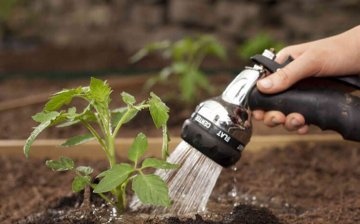
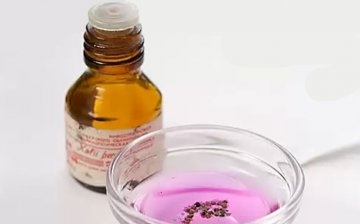
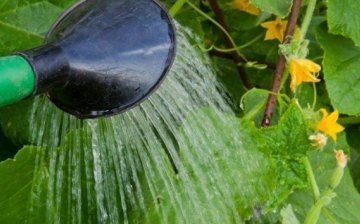
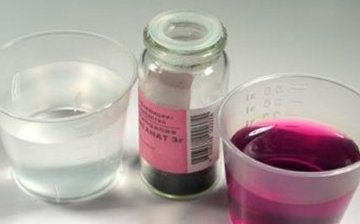








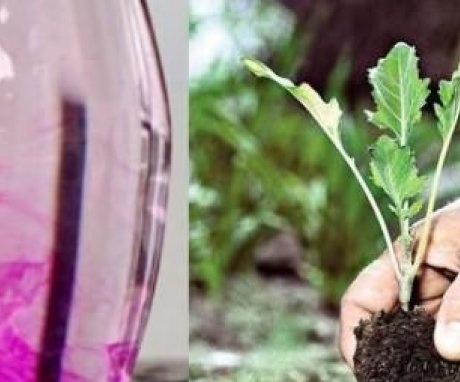




We process everything with potassium permanganate. And at home as applied to indoor plants, and in the country for processing seedlings before planting in open ground or in a greenhouse. The tool is not expensive.
Yes, a solution of potassium permanganate is a familiar and well-known remedy used by my grandmother, I also use it quite often, it is always in my medicine cabinet. Of course, I use it more at home, I treat my flowers.
If you plant potassium permanganate very carefully, then it will not cause much harm to plants. But the benefit from it has recently become small, apparently, harmful microorganisms in my area have adapted to it, and earlier it helped well against various plant diseases.